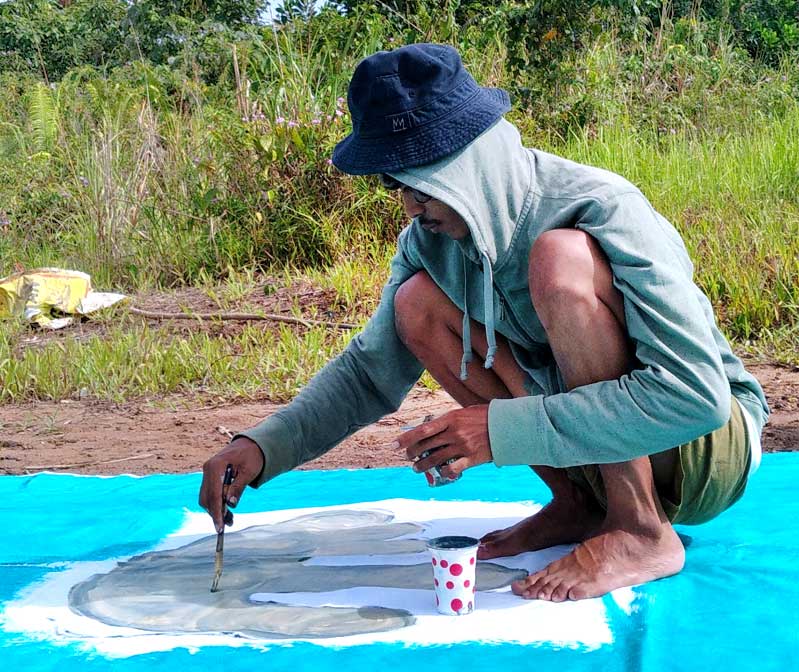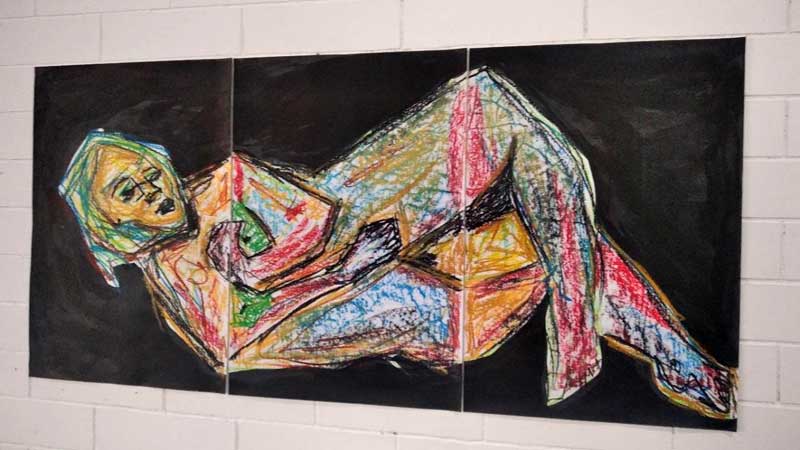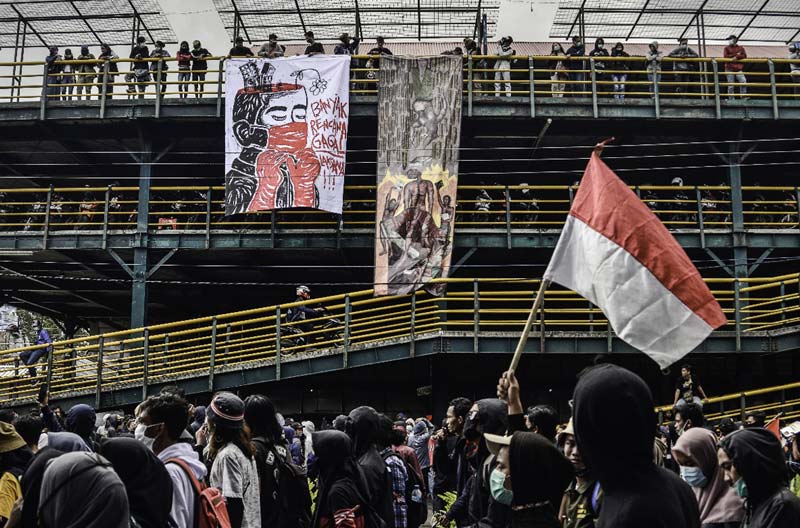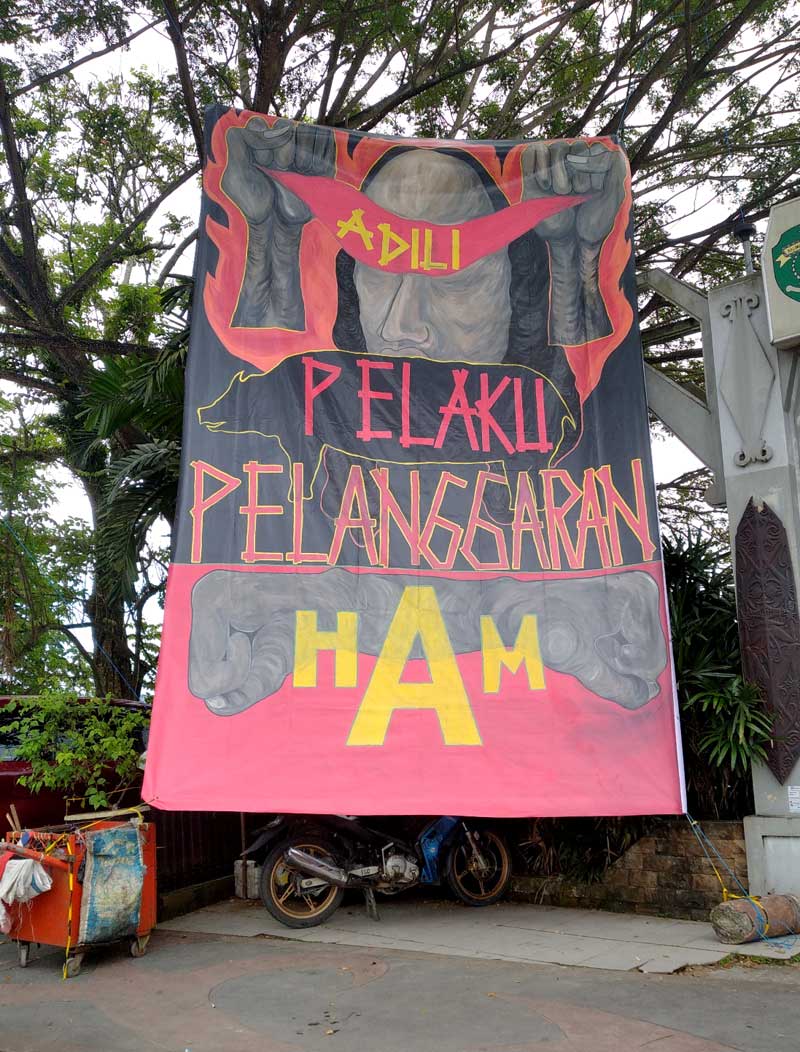
My family struggled to put me through the expensive education system of Indonesia from my childhood until I obtained a bachelor’s degree in Cultural Communication. In October 2016 I completed my undergraduate program in a fairly good religious institution in Banyumas. There I developed the artistic approach which I use to this day.
Indonesia is a haven for many crimes against humanity, and land grabs are still carried out by officials. The military is the main perpetrator of violence on land owned by farmers. I was born from the sweat of farmers which instilled in me the idea that farmers should be self-governing and not dependent on the state.
After completing my undergraduate education in Banyumas, I became involved in performing arts and became involved in campaigning for the rejection of the seizure of living space by the state against farmers in Indonesia. At the beginning of 2018 I entered The Indonesian Art Institute in the city of Yogyakarta which had become the center of art in Indonesia and educated so many art activists such as Sudjoyono, Yos Suprapto, Affandi, Amrus Natalsaya, Isa Hasnanda, Misbah Tamrin, Semsar Siahaan (Bandung). After going through a fairly tough test and a fairly rigorous selection, I was able to enter the Yogyakarta Institute of the Arts.

My works discuss what is happening around where I live, which cannot be separated from the many humanitarian issues in Indonesia. But I don’t want to be trapped in the conventional forms of problems that exist – I want to explore more deeply and directly come up with radical ideas in my work. For almost two years, my teacher, Yos Soeprapto, and myself have used the method of resistance that was used by the philosopher Rudolf Steiner for the restoration of land that is sick due to the use of chemical pesticides and the involvement from multinational companies in Indonesia. This gave me the impetus to engage in the campaign against mineral mining in Indonesia in 2021.
In 2020 I was also involved in the rejection of the iron sand mine in the Kulon Progo river also Jomboran village in Yogyakarta Indonesia and the rejection of the Quari stone mine in the village of Wadas Purworejo Indonesia in April 2021. I carried out a campaign with the work of Growing up in a former mining pit in Samarinda, East Kalimantan in December 2021, putting on a series of exhibitions on the island of Borneo in Banjarbaru, South Kalimantan and in Samarinda, East Kalimantan.
In previous years I had used performing arts, but I consolidated my practice by studying arts as a means of criticising an unbalanced regime. When in April 2016 we held an art exhibition on the slopes of Mount Slamet the military came to disband our event, but a struggle continued as legal activists defended us at that time. After the collapse of the New Order in Indonesia in 1998, during nearly 35 years of the ruthless control of General Suharto, many activists had disappeared, but many founded progressive organizations along with the rise of reform in Indonesia. Unfortunately, the influence of the New Order is still there, as it was reborm in small towns that still adhere to feudalism and patriarchy, but I believe that there will be change through the development of technology and science.
I am a member of the cultural organization SeBUMI (Indonesian Community Cultural Union) which is now experiencing stagnation because many of our members are elderly. I have an arts collective ‘Kelas Bebas’ comprised of art students who are pluralistic and open to all ideas. I founded this in 2019 along with a sculpture student collective at the Indonesian Art Institute of Yogyakarta, called “Lingkar Berhala” which has a mission to build a culture in togetherness for the acquisition of new ideas in art. I like Indian songs to soothe a restless spirit in my heart. I believe my work is a continuation of the Art-Brut style, because of the freedom that gives me to play without fear and anxiety.

